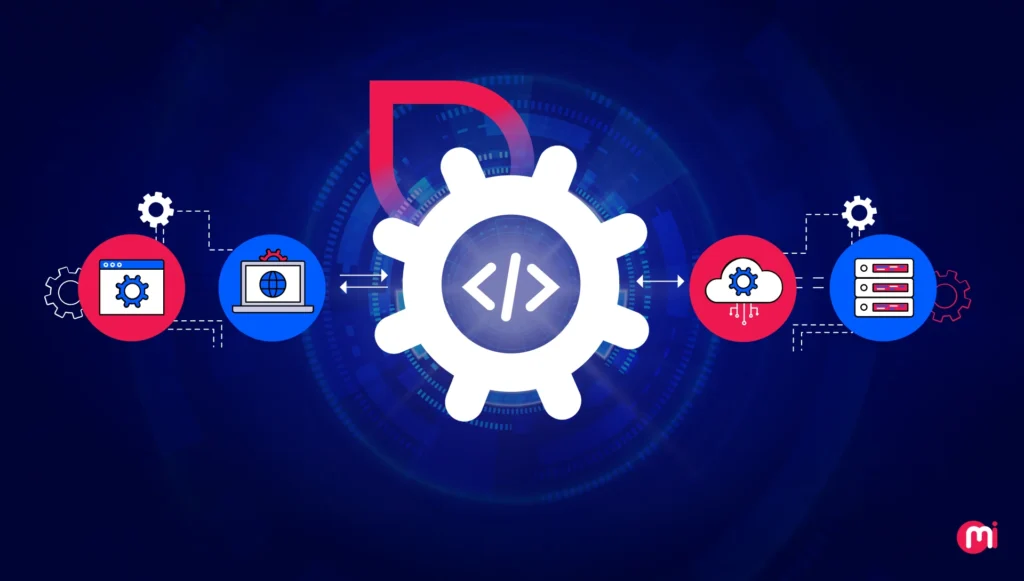The realm of software integration is rapidly expanding, with the market size projected to reach $71.74 billion by 2033. This surge indicates the growing adoption of software integration solutions by businesses seeking to enhance their operational efficiency. When your software fails to evolve alongside your business, it can lead to inefficiencies and hinder growth. This is where software integration comes into play, allowing you to upgrade your system and align it with your current needs.
By integrating your existing software with custom solutions, you can centralize data, streamline workflows, boost productivity, and enhance customer experiences. It’s not just about adding new tools; it’s about creating a well-connected ecosystem that supports business growth and long-term scalability.
The process of software integration involves linking custom software with an organization’s current infrastructure, including applications, databases, and other systems. This integration automates processes, enhances operational effectiveness, and facilitates the seamless flow of information throughout the organization.
Key aspects of software integration solutions include bridging gaps between legacy systems and new capabilities, data synchronization for real-time data sharing, process automation to streamline operations, creating a unified platform for integrated operations, and utilizing APIs and database connectivity for seamless communication between software systems.
There are various types of software integration, such as API integration, data integration, system integration, cloud integration, CRM integration, ERP integration, and Service-Oriented Architecture (SOA) integration. Each type serves a specific purpose and offers unique benefits for businesses looking to optimize their systems.
The benefits of software integration include centralized data management, reduced manual work, increased productivity, enhanced customer experiences, improved scalability, and cost savings in the long run. By integrating custom software into existing systems, businesses can unlock new opportunities for growth and efficiency.
Knowing when to integrate custom software into existing systems is crucial. Signs that indicate the need for software integration include outdated systems, inefficiencies, scalability issues, manual tasks, fragmented data, and the need for process automation. Addressing these challenges through software integration can help businesses stay competitive and agile in a rapidly evolving market.
Implementing best practices for software integration is essential for a successful integration process. These practices include assessing existing systems and workflows, defining integration goals and KPIs, prioritizing data security and consistency, choosing the right integration approach, collaborating with stakeholders and IT teams, thorough testing before deployment, providing employee training and support, and continuously monitoring and optimizing the integration process.
While software integration offers numerous benefits, there are also challenges to consider. Common challenges include compatibility issues with legacy systems, data security and compliance concerns, high upfront expenses, uncertainty of ROI, and employee resistance to change. Overcoming these challenges requires careful planning, communication, and collaboration across all departments.
In conclusion, software integration plays a crucial role in modernizing and optimizing business operations. By integrating custom software with existing systems, businesses can unlock new opportunities, streamline workflows, and enhance overall efficiency. With the right approach and best practices in place, software integration can pave the way for long-term success and growth in today’s competitive landscape.

